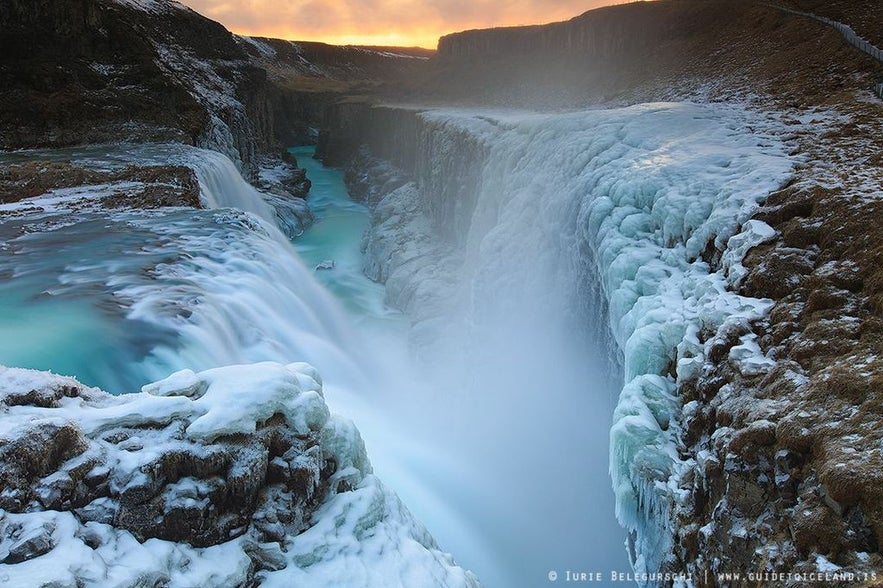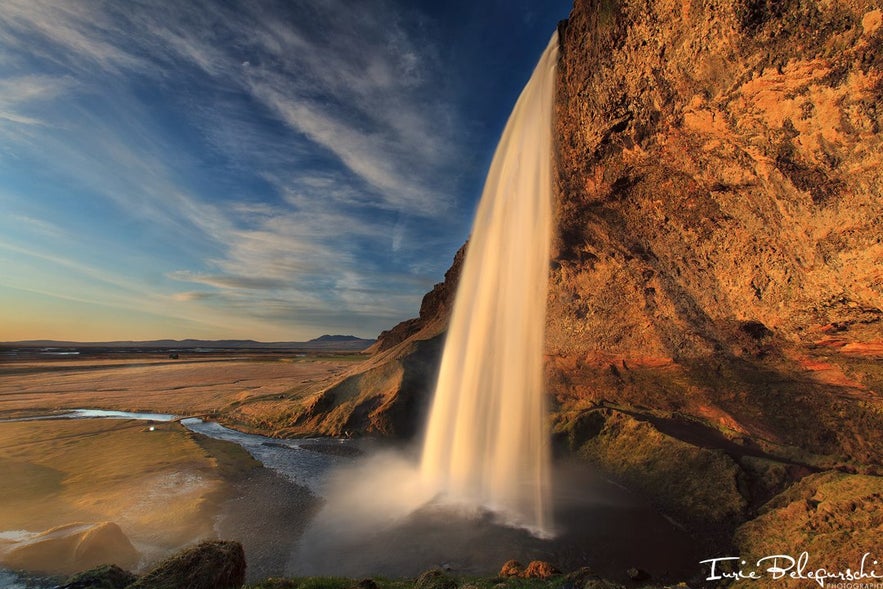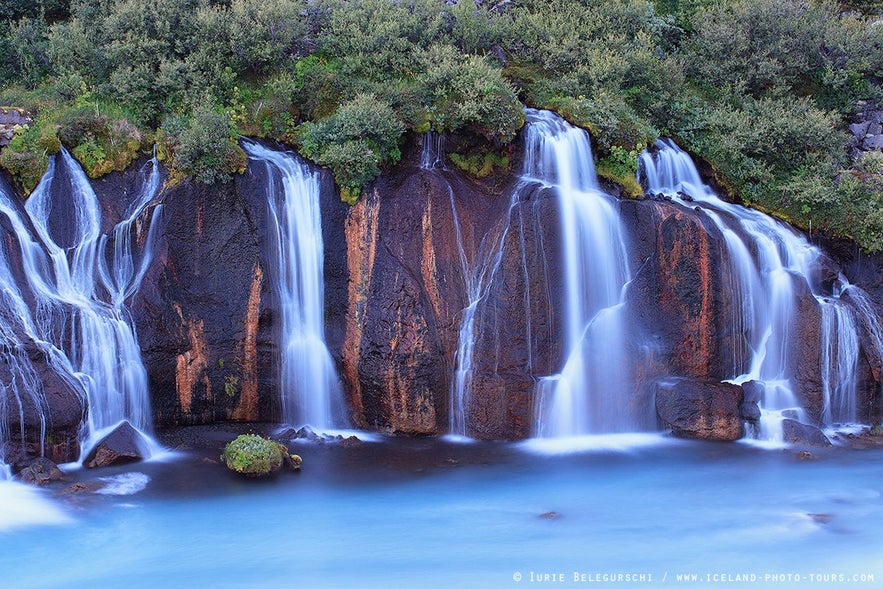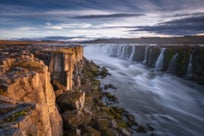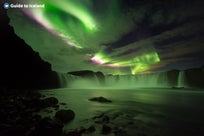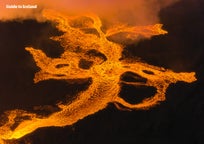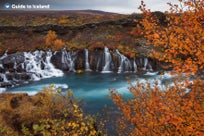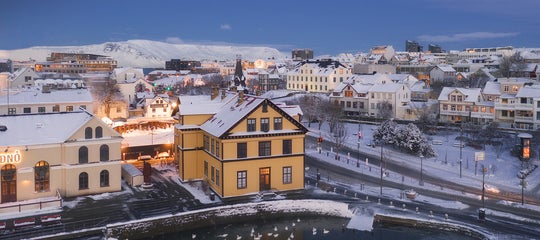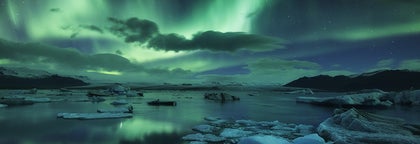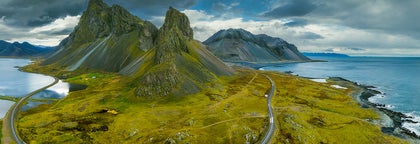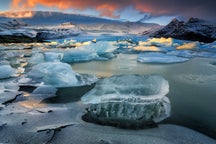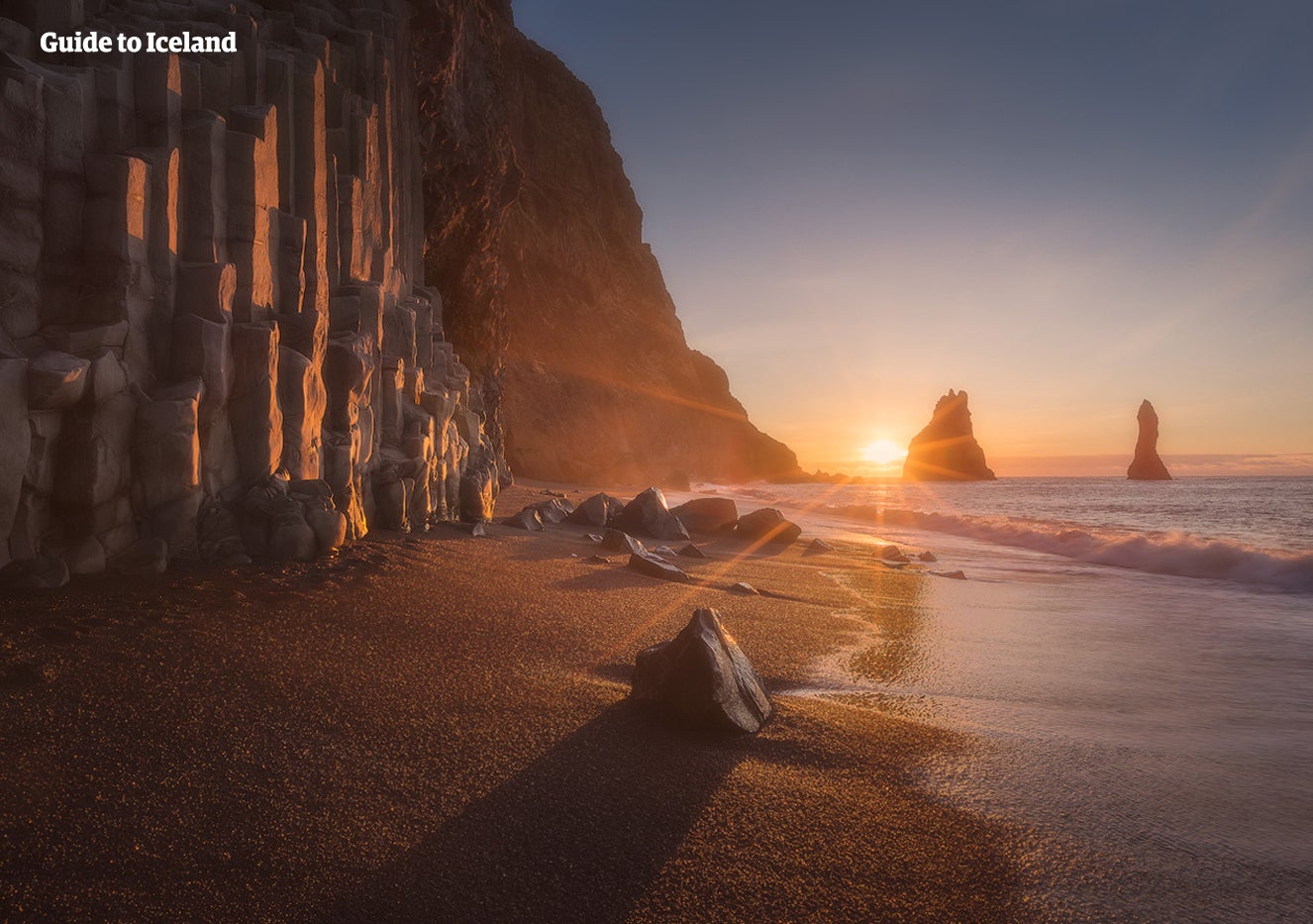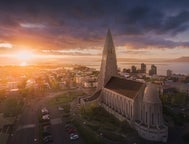
Waterfalls in Iceland

- Gullfoss | Iceland's Most Popular Waterfall
- Glymur | Iceland's Second Tallest Waterfall
- Hengifoss | Iceland's Third Tallest Waterfall
- Haifoss | Iceland's Fourth Tallest Waterfall
- Dettifoss | The Most Powerful Waterfall in Europe
- Seljalandsfoss | The One You Can Walk Around
- Hraunfossar | The Lava Waterfalls
- Skogafoss | Where the Fimmvorduhals Hike Starts
- Svartifoss | The One Surrounded by Dark Columns
- Dynjandi | The Crown of the Westfjords
- Map of Iceland's Waterfalls
Iceland has hundreds or even thousands of waterfalls. What are the most beautiful and popular waterfalls and where in Iceland are all these waterfalls?
It has been said before that when it comes to water, Iceland has an abundance of it – in all forms. Be it in swimming pools, hot springs, geysers, lakes, glaciers, rivers, or waterfalls, Iceland is bursting at the seams.
The waterfalls in Iceland are countless. Every year, new ones form from melting glaciers and almost every river has a few. They can be seen all over the country, many of them from the Ring Road. The best way to see them is to rent a car and drive the Circle. Here are some of the major waterfalls you can see.
Gullfoss | Iceland's Most Popular Waterfall
Gullfoss waterfall directly translates to "Golden Falls" and is by many considered Iceland’s most beautiful waterfall. It is the most known waterfall in Iceland since it is close to Reykjavík and the Golden Circle draws its name from this waterfall, seeing as it is one of its pitstops along with Geysir and Þingvellir.
It is situated in the southwest part of Iceland and is only about a 2-hour drive from Reykjavík, by road number 35.
As seen from the picture of Gullfoss waterfall above, it looks stunning in winter and was chosen as the #1 waterfall to see in winter in Iceland by Guide to Iceland.
Glymur | Iceland's Second Tallest Waterfall
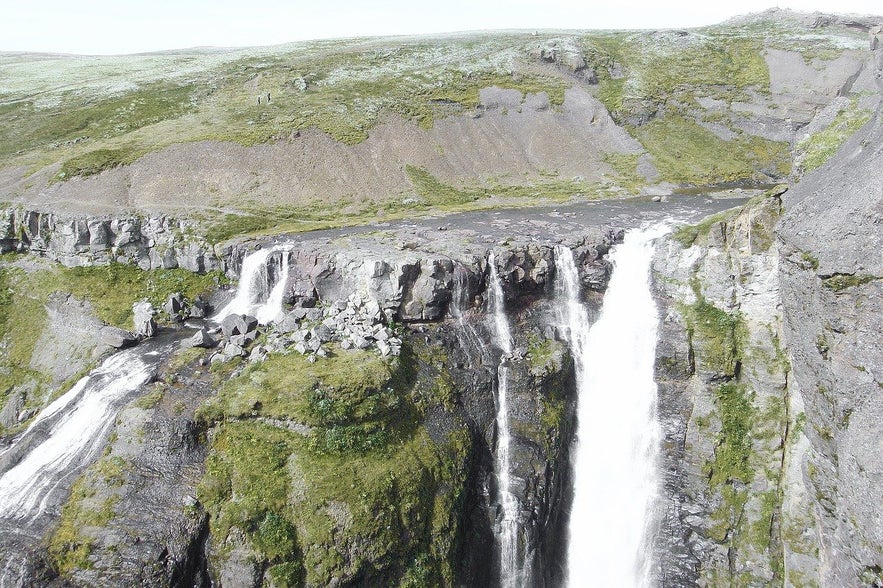 Photo by Katherine Kiese
Photo by Katherine Kiese
Glymur waterfall is Iceland’s second-highest waterfall, 198 meters high. For a number of years, it was the tallest waterfall in Iceland, and many locals still talk about it as such. But in 2007, a new waterfall emerged with melting glacial water, called Morsárfoss. Morsárfoss is still relatively unknown and is hard to reach, but has a drop of about 228 meters.
Glymur, however, is situated in Hvalfjörður fjord in the West. Although it is not far from Reykjavík it is not visible from Route 1 and is about a 2-hour hike from the main road. Here you can join a hiking tour to Glymur waterfall.
Hengifoss | Iceland's Third Tallest Waterfall
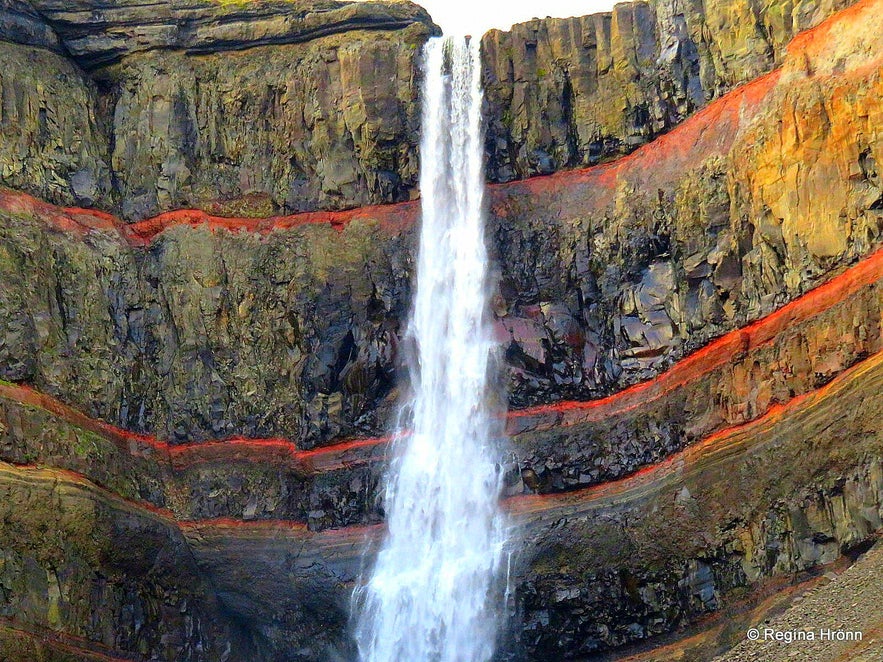
Hengifoss is 128 meters tall, making it the third-tallest waterfall in Iceland. It is situated in East Iceland, not far from the capital of the East, Egilsstaðir.
The waterfall is a single drop, amongst black lava cliffs with horizontal red stripes of clay in the rock face. The hike to the waterfall is a fairly easy one, although it takes about 40-60 minutes to hike all the way to the waterfall from the parking lot. On the way another waterfall can be admired, Litlanesfoss, and the stunning columnar basalts surrounding it.
As a bonus, if you look in the other direction you'll have a view over the Lagarfljót lake, and Iceland's largest forest, Hallormsstaðaskógur.
Haifoss | Iceland's Fourth Tallest Waterfall
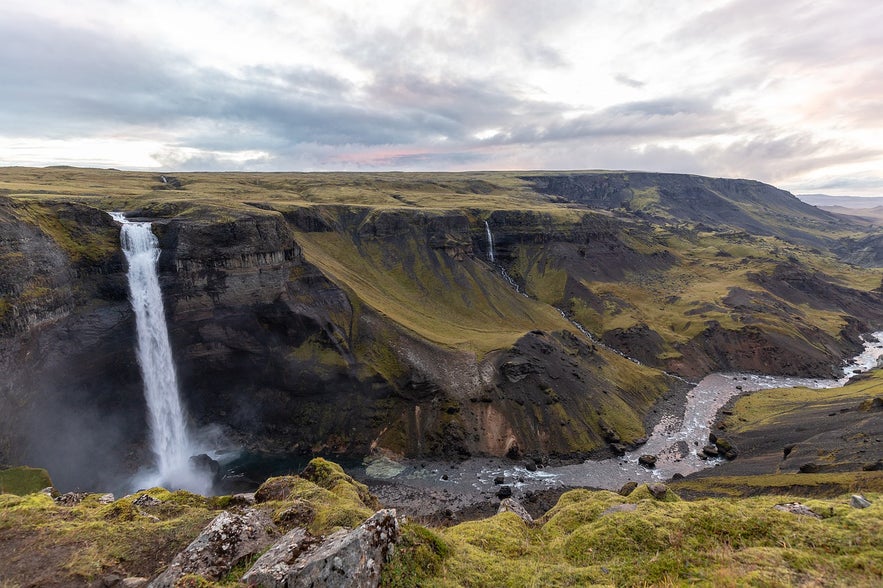 Photo by Michael Luenen
Photo by Michael Luenen
Háifoss waterfall is Iceland’s fourth highest waterfall, 122 meters tall. It is situated in Fossárdalur valley in the south of Iceland, in the inner Þjórsárdalur valley. You may need to hike a little from the road in order to reach it - but if the gravel road is in a good condition then you can reach a parking lot nearby.
From Reykjavík it's a 2-hour drive along Route 1; turn left onto Route 30 after you've passed Selfoss and then turn right onto Route. 32. From Route 32 you can drive the gravel Route 332 all the way up to the waterfall and park. Check the road condition beforehand if you're driving, go with a 4x4 car.
- See also: The Ultimate Guide to Driving in Iceland
Dettifoss | The Most Powerful Waterfall in Europe
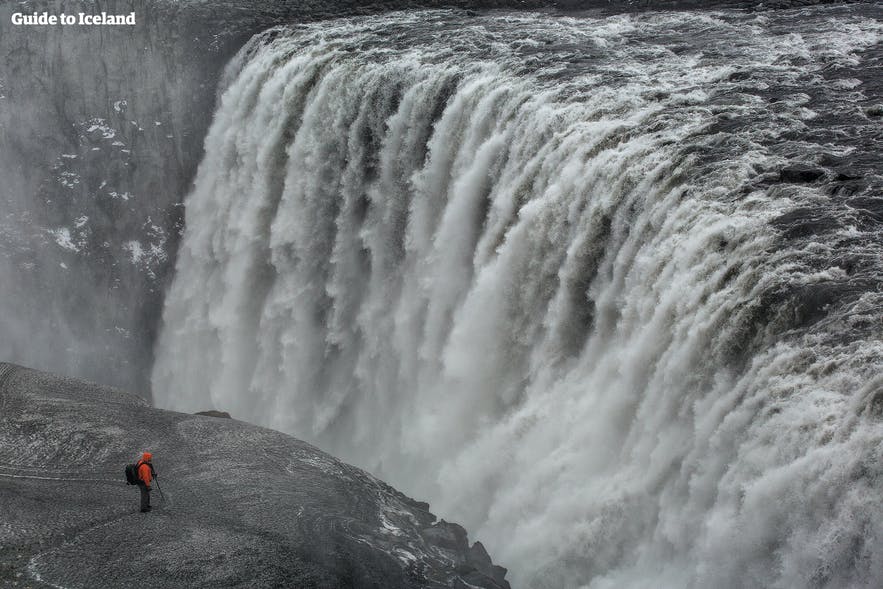
Dettifoss waterfall is the most powerful waterfall in Iceland when it comes to the volume of water and is one of the most powerful waterfalls in Europe. It is only 45 meters tall but about 100 meters wide, and it has an enormous amount of water thrusting down every second.
This waterfall was prominently displayed in the opening scene of Prometheus by Ridley Scott. Dettifoss is in the northeast part of Iceland, and you can reach it on a day trip from Akureyri or nearby Mývatn. It's also a main stop on Diamond Circle tours.
Seljalandsfoss | The One You Can Walk Around
Seljalandsfoss waterfall is in the south of Iceland and is easily accessible from all sides. It is right by the main road and there is a short walking path going all around it, accessible for every fitness level. It is breathtakingly beautiful to watch a waterfall standing right behind it!
You can drive to it yourself, just head east on Route 1 from Reykjavík and after a couple of hours, you'll see it. Alternatively, you can choose between many tours of the South Coast.
Hraunfossar | The Lava Waterfalls
Hraunfossar waterfall is a synonym for many spring water waterfalls running from Hallmundarhraun lava in the west of Iceland. Combined they form one of Iceland’s most picturesque features.
Hraunfossar is less than a 2-hour drive from Reykjavík; first, you head north on Route 1 but turn right onto Route 50 just before you reach Borgarnes. Route 50 then turns into Route 518 and that takes you all the way to these waterfalls.
Explore Hraunfossar waterfalls on this 5-Day Self Drive Tour | Wonders of West Iceland.
Skogafoss | Where the Fimmvorduhals Hike Starts
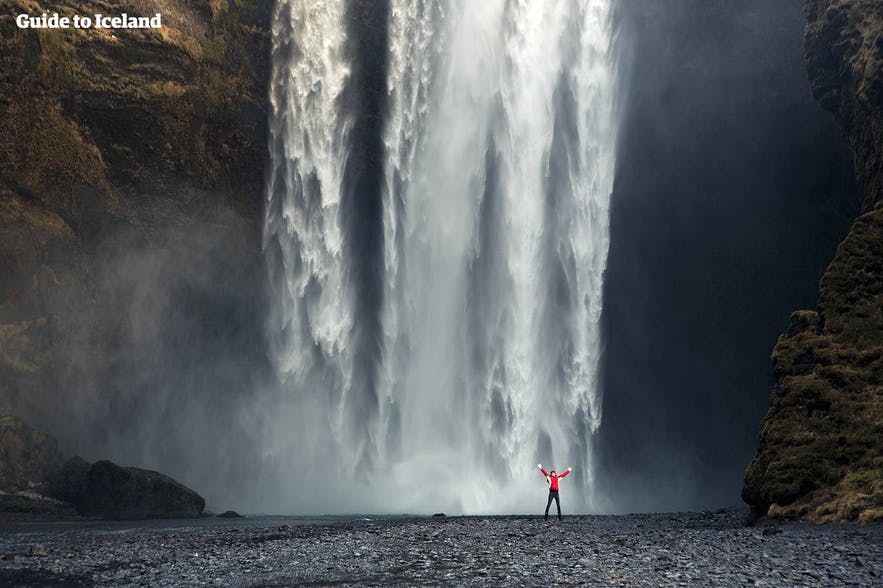
Skógafoss waterfall is a prominent waterfall by route 1 and marks the beginning of Fimmvörðuháls hike over to Þórsmörk.
Above Skógafoss along the hiking trail are various waterfalls in all sizes and shapes for a few kilometers, each even more beautiful than the last (I think I counted 33 waterfalls on the way up to Eyjafjallajökull last time I hiked Fimmvörðuháls).
This waterfall is seen from the Ring Road and is featured in every South Coast tour available.
Svartifoss | The One Surrounded by Dark Columns
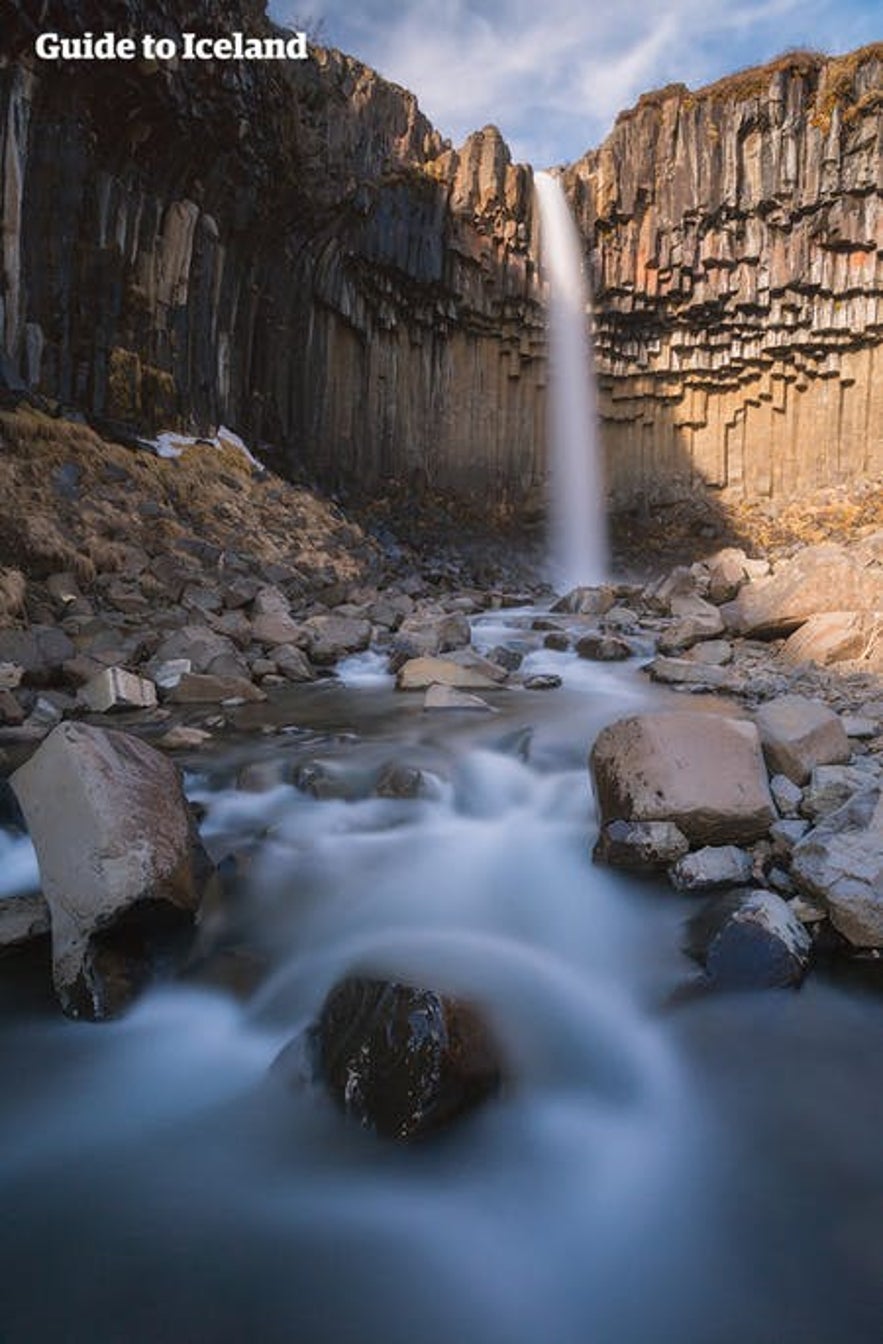
Svartifoss waterfall is situated in Skaftafell, within the Vatnajökull National Park. The columnar basalt that surrounds it is some of the most picturesque columns you can find in Iceland, with the waterfall cascading right in the middle.
This beautiful natural structure has inspired artists for decades, for example in the design for Hallgrímskirkja. In Skaftafell you can choose between a couple of hiking trails through beautiful scenery leading to this magnificent waterfall.
And getting to Skaftafell is easy, just drive the south coast along Route 1. From Reykjavík, it's at least a 4-hour drive (but you'll want to stop on the way to admire other waterfalls - so take your time and spend the night in Skaftafell or nearby!)
These waterfalls are just the tip of the iceberg – you can find countless others all over Iceland. It’s hard to pick out a favorite waterfall, but each Icelander has one.
Dynjandi | The Crown of the Westfjords
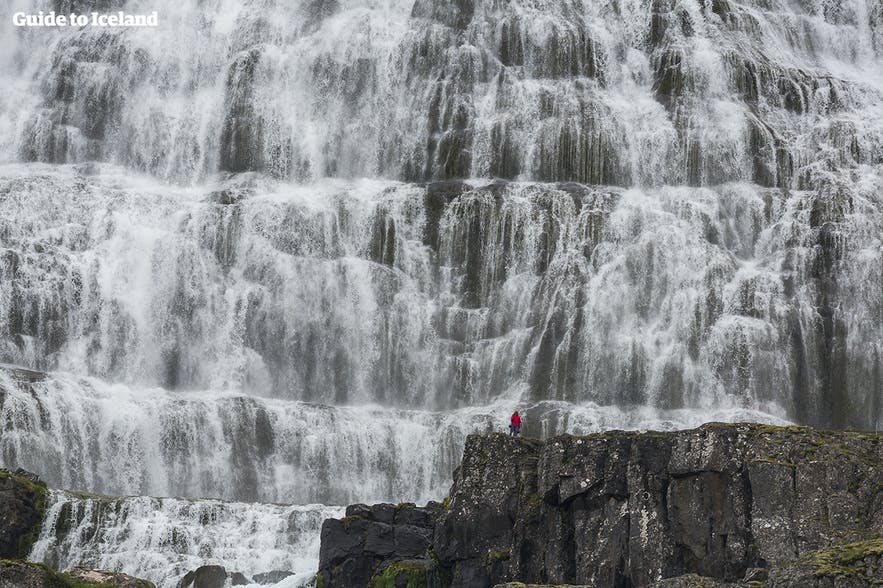
Personally, Dynjandi waterfall is one of my favorite waterfalls in Iceland. It is 100 meters high and gradually spreads out from top to bottom. At the top, it is about 30 meters wide but at the bottom, it is about 60 meters wide.
The waterfall is one of seven in a row of waterfalls. It's situated in the Westfjords of Iceland, the most remote area of the country. You can join this tour of Dynjandi from Ísafjörður - or rent a car and drive there yourself from Reykjavík. (It's about a 6-hour drive, so you won't do it in a day!)
Map of Iceland's Waterfalls
Here is a map of Iceland that shows you where the most popular, the most impressive, the tallest and the most picturesque waterfalls can be found in the country. But note, this is not an exhaustive list as there are countless other ones!
Which one is your favorite Icelandic waterfall? Tell us in the comments!
Andere interessante artikelen

De 18 Beste Dingen Om Te Doen en Plaatsen om te Bezoeken in IJsland
Vind de top dingen die iemand kan doen in IJsland en lees verder als je wilt weten wat onze suggesties zijn voor wat je kunt doen en waar je naartoe moet in IJsland. Of het nu de wonderen van de nat...Lees verderIJsland Bezoeken in Februari | De Ultieme Gids
Ontdek alles wat je moet weten over een bezoek aan IJsland in februari. Lees meer over het weer, wat je moet inpakken en hoe je je kunt voorbereiden op je reis. Vind boeiende reizen in februari en a...Lees verder
IJsland Bezoeken in Januari | De Ultieme Gids
Leer alles over een bezoek aan IJsland in januari, een van de beste maanden om ijsspeleologie, gletsjerwandelingen en de jacht op het noorderlicht te ervaren. Kom meer te weten over de beste dingen om...Lees verder

Download het grootste reisagentschap van IJsland op je telefoon en beheer je hele reis op één plek
Scan deze QR-code met de camera van je telefoon en klik op de link om het grootste reisagentschap van IJsland in je zak te stoppen. Voeg je telefoonnummer of e-mailadres toe om een sms of e-mail te ontvangen met de downloadlink.
